written by Barbara Carr Whitman
Ke Alanui Polohiwa a Ka̅ne, or summer solstice, was an occasion of celebration on Pihemanu, which means “din of loud birds” (oh so appropriate!) and is one of two Hawaiian place names for beautiful Midway Atoll.
A group of volunteers are learning how the Native Hawaiian culture recognizes and appreciates the interwoven relationship between nature and people. As part of their experience, they are learning the significance and techniques of the tradition of Hawaiian oli, or chant.
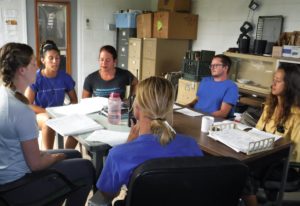
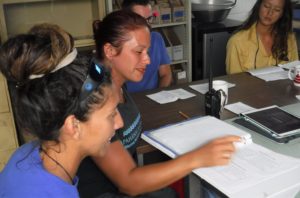
The day before the solstice, the group practices and discusses the meaning and tradition behind each chant.
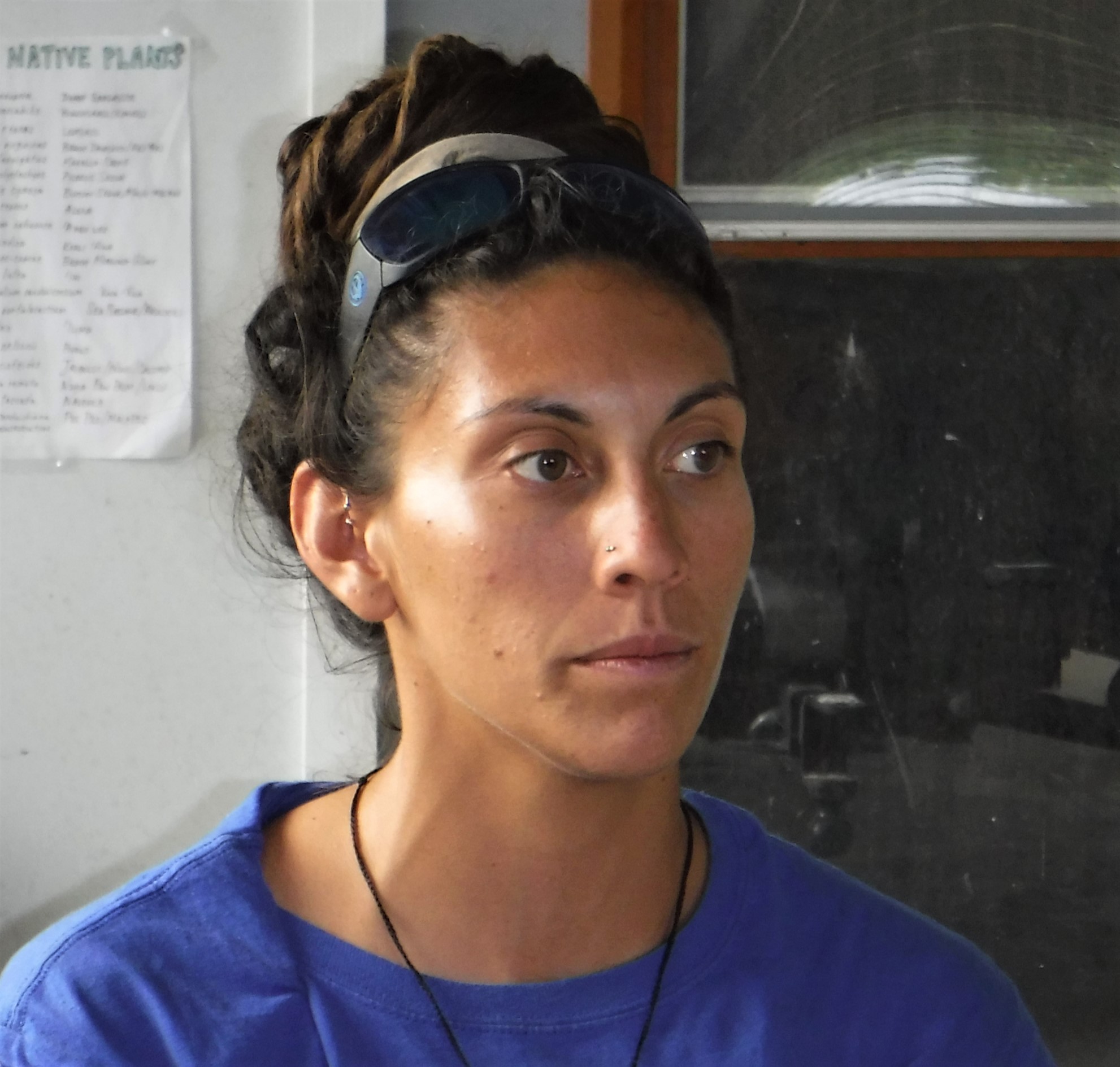
Group leader Puakea Moˋokini-Oliveira, pictured above, grew up on Oahu and is following her passion for Ma̅lama ˋA̅ina, which entails physically caring for a place as well as nurturing the relationship between people and place.
The organizations that care for Papaha̅naumakua̅kea Marine National Monument, a marine protected area which includes the northwestern Hawaiian islands, including Pihemanu, are The Office of Hawaiian Affairs , U.S. Fish and Wildlife Service , State of Hawaiˋi Department of Lands and Natural Resources, and the National Oceanic and Atmospheric Administration.
These forward-thinking organizations are pushing the bounds of the old status quo. As a result, there is support not only for scientific studies on land and in the ocean but for actively learning and teaching about the intimate connection between nature and culture.
Oli are used for several purposes. The three oli recited in three different locations throughout the day on June 21, 2019 were meant to celebrate the beauty of this wahi pana or “storied place” and to mark a change in seasons and the natural happenings associated with summer.
The first oli takes place on the eastern side of the island. The group waits until dawn begins to lighten the sky then stands, faces east and waits in reverent silence. When the first rays of sun break the horizon the silence is broken with a muted clap and then another until everyone is clapping in rhythm with cupped hands.
The chant speaks of the sun’s first appearance in Kumukahi, the easternmost point of the island chain, and in its rising touches each island on its way to Ho̅laniku̅ (Kure Atoll) until all islands and atolls have been graced with its warming presence.
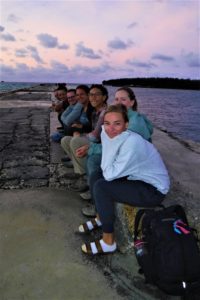
Puka mai ka la̅ I Kumukahi la̅ ˋea̅
The sun bursts forth at Kumukahi
A welo ana I Lehua la̅ ˋea̅
And sets at Lehua
He Waialoha ka makanila la ˋea̅
The wind is the Waialoha wind
O Hawaiˋiloa ke alahula la̅ ˋ ea̅
Hawai’iloa is the frequented pathway
I Ho̅lani ke kuˋ ina, i Ho̅laniku̅
Joining at H̅olani, at Ho̅laniku̅
The next oli in the series of three is at noon. The group bikes and walks to Akulikuli Point, which refers to the succulent green and red akulikuli plants crawling over the rough and sandy terrain along the shoreline. Sunrise and sunset can both be seen at this southernmost location and it is a jumping off place where albatross chicks are preparing to take flight on an unknown journey.
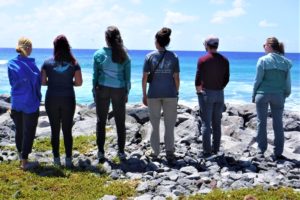
The group does a chant which sounds a lot like a prayer. It is a slow and meaningful ka̅hea, or acknowledgement, of Pihemanu and of the birds themselves.
The oli was written in 2013 by a group enroute to Pihimanu, also called Kuaihelani, an older Hawaiian name for Midway Atoll, which was rediscovered from old stories.
At the end of the day, island residents meet on Naˋu, or North Beach, to bring the longest day of the year to a close. This favorite beach where Pihemanu residents most often watch the sunset is the chosen spot for the final oli – Oli Nalohia – a chant for passing, whether it be the passing of the day or a life.
On this day of celebration, the lively chant brings to an end this year’s Summer Solstice.
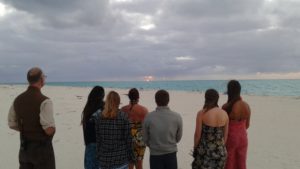
After the oli everyone, including Acting Refuge Manager Stephen Barclay, takes time to reflect on the day and enjoy the sunset on the first day of summer.
